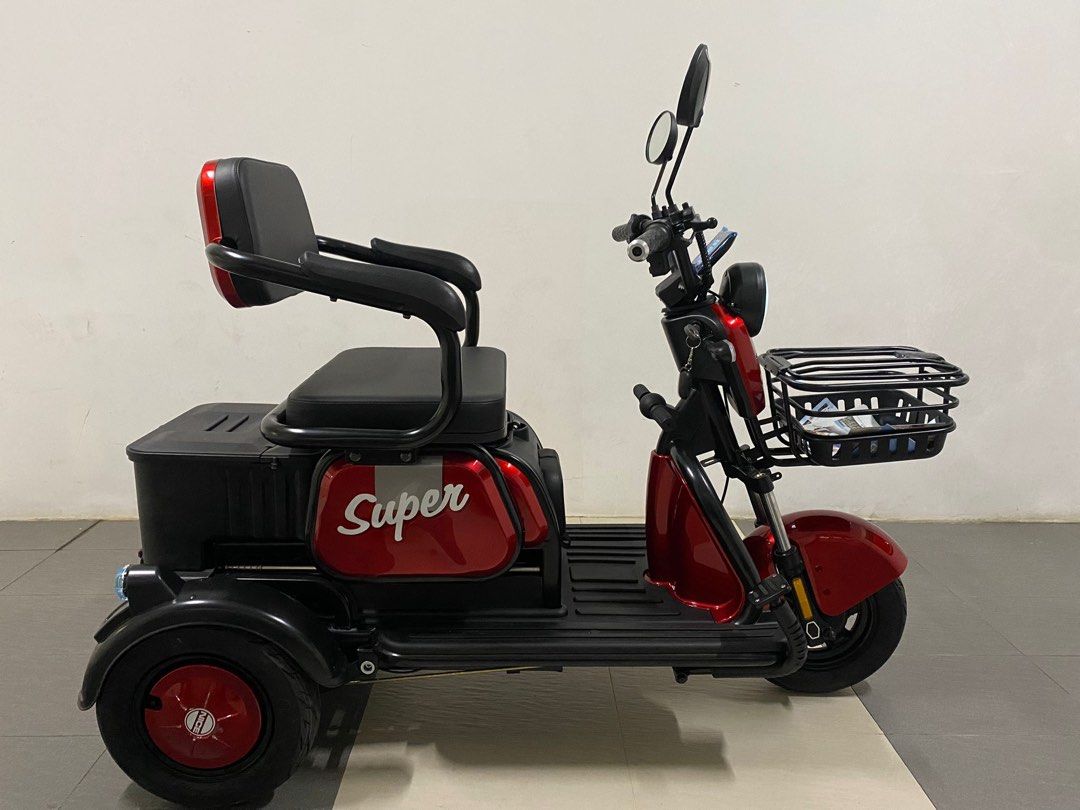You’ve probably seen many elderly using mobility scooters to navigate around the neighbourhood, giving much-needed assistance for mobility.
However, you may have also seen perfectly healthy individuals using these scooters simply for the convenience to avoid walking.
Amidst growing complaints about the misuse of these scooters, also known as Personal Mobility Aids (PMAs), the government is exploring the possibility of implementing stricter regulations.
PMAs are primarily intended for individuals who struggle with standing or walking for prolonged periods or lack the strength to operate a traditional wheelchair.

On 14 December 2023, the Active Mobility Advisory Panel (AMAP) submitted a proposal to the Ministry of Transport in response to concerns about the misuse of PMAs by able-bodied individuals.
These concerns include issues such as reckless riding, excessive speed, and the use of oversized PMAs.
The proposal is based on feedback gathered through three focus group discussions held in June and July, which included PMA users, occupational therapists, pedestrians, and others.
PMA Only for Those With Medical Needs
The review panel has proposed that only individuals certified as having mobility difficulties or with medical needs should be allowed to use mobility scooters.

During the focus group discussions, the participants expressed concerns about the misuse of PMAs by individuals who appeared to be physically able and exhibited behaviours that endangered the safety of other path users, according to AMAP.
This proposed requirement applies specifically to mobility scooters, not manual and motorised wheelchairs. This decision is based on the “widespread feedback” regarding misuse associated with mobility scooters, as noted by AMAP.
If the proposal is accepted, existing PMA users can use relevant certification or disability identification, such as concession cards for individuals with disabilities, as proof of eligibility.
Those who do not possess such documentation will need to acquire certification of a medical necessity or obtain a doctor’s memo before using a PMA.
To ensure that the new requirement does not unduly burden genuine users, AMAP has recommended allowing sufficient time for them to obtain such certifications before enforcement begins.
Chairman of AMAP, Baey Yam Keng, also the Senior Parliamentary Secretary for Transport, mentioned that the government will take several months to thoroughly review the recommendations before deciding on their adoption.
Reduced Speed Limit from 10km/h to 6km/h
The 16-member advisory panel has also recommended that the government reduce the speed limit for all motorised PMAs, including motorised wheelchairs, from 10km/h to 6km/h, which is the typical walking speed.
This adjustment aligns with the intended purpose of these devices, which is to provide an alternative to walking for individuals with mobility challenges.
The panel has also proposed that retailers should be mandated to sell PMAs with a maximum speed not exceeding 6km/h.
To facilitate this transition, a reasonable period should be allowed for retailers to clear their existing stock and acquire devices that comply with the proposed speed limit.
Furthermore, with the proposed speed limit in effect, AMAP has suggested that mobility aids travelling at speeds greater than 6km/h should be reclassified as motorised personal mobility devices, which would restrict their usage to cycling paths only.
AMAP did not provide an estimated count of active mobility aid users or devices in Singapore, as these devices are not required to be registered at the time of purchase.
The panel anticipates an increase in the number of users of such mobility devices as Singapore’s population ages.
Specific details for implementing these recommendations will be finalised through further discussions with relevant government agencies if the government decides to accept them.
Dimension Restrictions for PMAs
The panel has recommended extending the same dimension restrictions for mobility aids used on public transport to their use on public paths.
These dimensions include a width of 70cm, length of 120cm, height of 150cm, and a combined weight of 300kg with the rider on board. This change aims to facilitate smoother transitions between public paths and public transport for users of these devices.
Currently, there are no specific restrictions on the dimensions of mobility aids on public paths.
For individuals who require larger mobility aids for medical reasons, the panel suggests that the government consider exempting them from these restrictions if they possess relevant certification.
Additionally, the panel recommends increasing public education efforts regarding the proper use of mobility aids, including providing safety tips for riding and fire safety. They also stress the need for better enforcement with appropriate penalties.
Lastly, the panel suggests that the registration of mobility aids should not be introduced, as it may discourage individuals with genuine needs from using these devices.
Would you be jailed for being half-naked in public? Well, the answer will shock you. Seriously. Watch this to the end and you'll understand:




